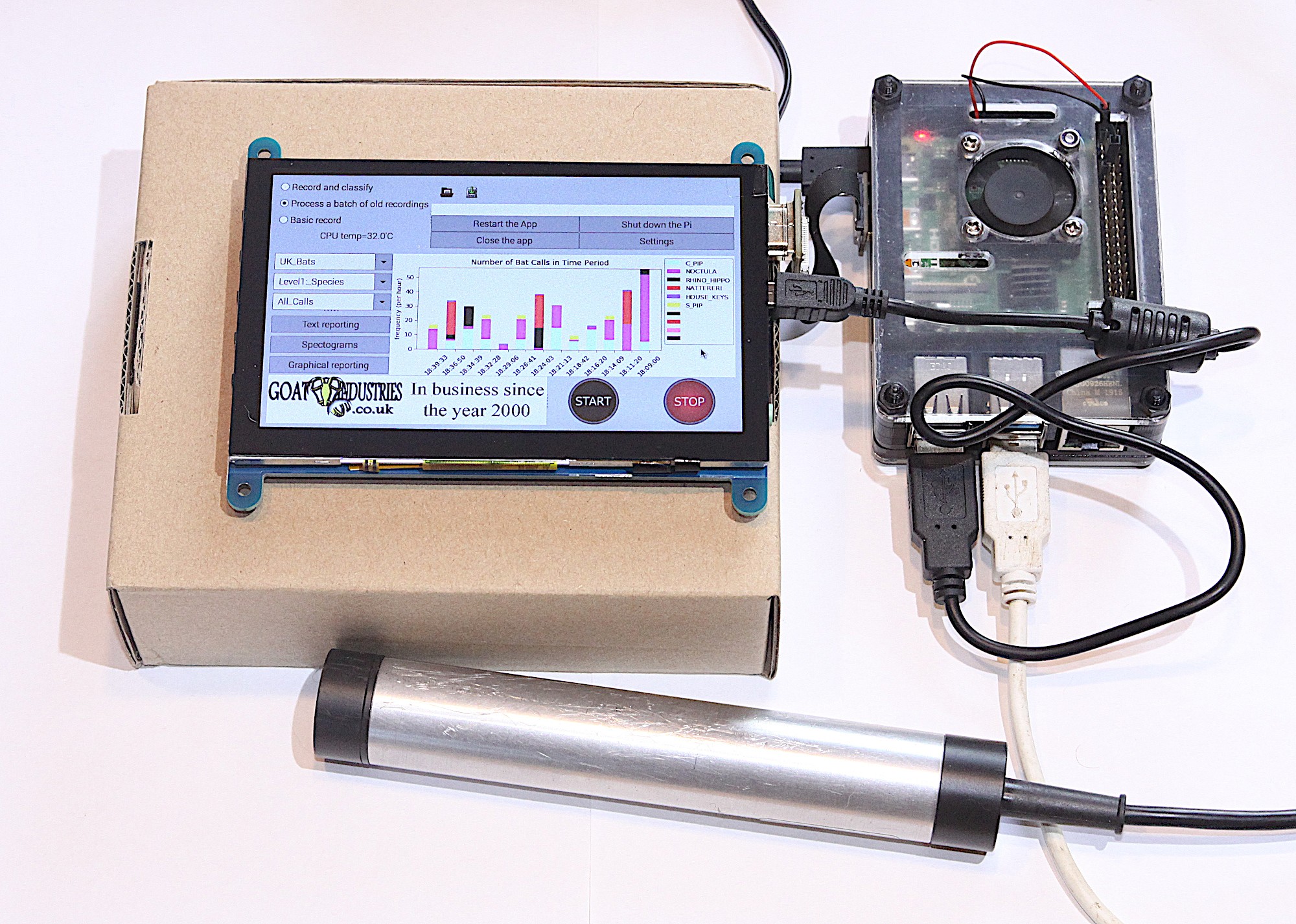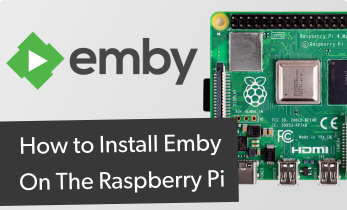Audacity Raspberry Pi 4
Along with yesterday’s launch of the new 8GB Raspberry Pi 4, we launched a beta 64-bit ARM version of Debian with the Raspberry Pi Desktop, so you could use all those extra gigabytes. We also updated the 32-bit version of Raspberry Pi OS (the new name for Raspbian), so here’s a quick run-through of what has changed. The CanaKit Raspberry Pi 4 4GB Starter Kit includes a premium Raspberry Pi case as well as a Samsung 32 GB EVO+ Class 10 MicroSD pre-loaded with NOOBS. Actually – it took a few open tabs (including gmail) in chrome, audacity, some file managers, a couple terminals, and finally the arduino ide pushed it just a little past 1 gb reported. Click “CHOOSE OS” and select “Misc utility images” then “Pi 4 EEPROM boot recovery”. Insert an SD card, click “CHOOSE SD CARD”, select the card you have inserted, then click “WRITE”. Once the SD card is ready, insert it into your Raspberry Pi 4 then connect the Raspberry Pi to power.
editSeeed’s ReSpeaker 4-Mic Linear Array Kit isan extension board, aka HAT designed for Raspberry Pi. It's a linear microphone arraykit, comes with four microphones anddesigned for AI and voice applications. Thatmeans you can build a more powerful andflexible voice product with Raspberry Piwhich can integrate Amazon Alexa VoiceService, Google Assistant, and so on.

ReSpeaker 4-Mic Linear Array Kit forRaspberry Pi consists of two boards, one isvoice accessory HAT, another is fourmicrophones linear array.
ReSpeaker 4-Mic Linear Array Kit forRaspberry Pi support 8 input & 8 outputchannels in Raspbian system. The first 6input channel for microphonerecording(only first 4 input channels arevalid capture data), rest of 2 input channelare echo channel of playback. The first 2output channel for playing, rest of 6 outputchannel are dummy.
Features¶
- 2 ADC chips and 1 DAC chip
- 8 input and 8 output channels
- Four microphones array
- Grove support
- Raspberry Pi compatible(Support Raspberry Pi Zero and Zero W, Raspberry Pi B+, Raspberry Pi 2 B, Raspberry Pi 3 B, Raspberry Pi 3 B+, Raspberry Pi 3 A+ and Raspberry Pi 4)
- Headset and speaker voice output
Specification¶
- 2 x X-Power AC108 ADC
- 4 x high performance analog microphones
- 1 x X-Power AC101 DAC
- Voice output:
- 3.5mm headset audio jack
- Speaker jack
- Compatible with Raspberry Pi 40-pin headers
- Microphones: MSM321A3729H9BP
- Sensitivity: -22 dBFS (Omnidirectional)
- SNR: 59 dB
- Max Sample Rate: 48Khz
Application Ideas¶
- Smart speaker
- Intelligent voice assistant systems
- Voice recorders
- Voice conferencing system
- Meeting communicating equipment
- Voice interacting robot
- Car voice assistant
- Other scenarios need voice command
Hardware Overview¶
System Diagram
Interface
Note
After connecting, be sure to use a multimeter to determine if the conduction of the circuit is as indicated in the figure above.
Assembly drawing¶
Getting Started¶

Hardware¶
Prerequisites
ReSpeaker 4-Mic Linear Array Kit x1
Raspberry Pi 3B or 3B+ x1
Micro-USB Cable x1
PC x1
Earphone or Speaker x1
Tips
Actually the ReSpeaker 4-Mic Circular Array support Raspberry Pi Zero, Raspberry Pi 1 B+, Raspberry Pi 2 B, Raspberry Pi 3 B and Raspberry Pi 3 model B+ and Raspberry Pi 3 A+, in this wiki we are using Raspberry Pi 3.
Connection
Step 1. Connect the ReSpeaker Voice Accessory HAT with ReSpeaker 4-Mic linear Array via the Ribbon Cable
Step 2. Plug the ReSpeaker Voice Accessory HAT into the Raspberry Pi via the 40 Pin GPIO
Step 3. Plug the earphone into the 3.5mm headset audio jack or plug the speaker into the JST 2.0 speaker jack
Step 4. Connect the Raspberry Pi with the PC via the micro-USB cable
Software¶
Prerequisites
Audacity Raspberry Pi 4 Model B
Plan A

You need to use Putty or other ssh tools to connect with your raspberry pi. Before started, please make sure:
1- Open ssh fuction of your pi to let the putty in. If you do not know how to open ssh, please google how to setup ssh raspberry pi
2- Your raspberry pi and your PC are working on the same WiFi net. If you do not know how to config WiFi, please google how to setup wifi raspberry pi
3- Get the ip address of your raspberry pi, if you do not know how to get the ip address please refer to raspberry offical documentation
4- Use the ip address to connect the raspberry pi with your PC via putty ssh serve.
Then please tap the host name and the password. the default ID is pi and the password is raspberry.
Now you are in, and you can tap the command in putty and play with your raspberry.
To make this kit work with alexa or dueros, you need to open a web site to get the authorization. So you need to use VNC Viewer to log in your amazon or baidu account. So please make sure you have open the VNC service of your raspberry.
Raspberry Pi 4 Audio Jack
Or you can just consider plan B.
Plan B
If you are tired of all above, you can just use a HDMI Monitor and plug the USB Keyboard and USB mouse in to your raspberry, it works too, simple and easy.
Step 1. Install seeed-voicecard
Get the seeed voice card source code. and install all linux kernel drivers.
Step 2. Check the Sound Card
Tap the command below to check the record device.
It should be like:
Use the following command to check the play device.
It should be like:
Step 3. Record and Play
You can record then play, or you can record and play at the same time.
Note
Limit for developer using 4-Mic linear Array Kit(or 4-Mic Linear Array Kit) doing capture & playback the same time:
-1. capture must be start first, or else the capture channels will possibly be disorder.
-2. playback output channels must fill with 8 same channels data or 4 same stereo channels data, or else the speaker or headphone will output nothing possibly.
-3. If you want to play and record at the same time, the aplay music file must be mono, or you can not use this command to play.
Also you can play and record with Audacity.
Tips
You should open Audacity via VNC or you can just use a monitor to open it
Extract Voice¶
We use PyAudio python library to extract voice.
- Step 1, We need to run the following script to get the device index number of 4 Mic pi hat:
- Step 2, copy below code and paste on get_index.py.
Step 3, press Ctrl + X to exit and press Y to save.
Step 4, run 'sudo python get_index.py' and we will see the device ID as below.
- Step 5, change
RESPEAKER_INDEX = 2to index number. Run python script record.py to record a speech.
- Step 6. If you want to extract channel 0 data from 8 channels, please follow below code. For other channel X, please change [0::8] to [X::8].
FAQ¶
Q1: There are only 4 Mic in the Mic Array, how could it be 8 channels?
A1: There are 2 AC108 in this array, and each AC108 chip has 4 channel output. So it comes a total of 8 channels here, 4 of which are for the microphone, two channels for the playback and the the rest 2 channels are not used.
Q2: If Raspberry can detect ReSpeaker 2-mics hat, but can't detect ReSpeaker 4-mics linear array?
A2: Please click raspberry -> Preferences -> Raspberry Pi Configuration, then select the Interfaces tab, make sure the 1-Wire is Disabled.
Resources¶
- [PDF]AC101 Datasheet
- [PDF]AC108 Datesheet
- [Driver]Seeed-Voice Driver
- [Algorithms]Algorithms includes DOA, VAD, NS
- [Voice EngineVoice Engine project, provides building blocks to create voice enabled objects
- [Algorithms]AEC
- [Mechanical Drawing]2D Drawing
Projects¶
Mojing Mojing - A Smart Mirror with ReSpeaker!: A smart mirror with voice interface control via ReSpeaker. We also connect with Wio Link to control other objects! Based on Raspberry Pi.

Tech Support¶
Please submit any technical issue into our forum.
